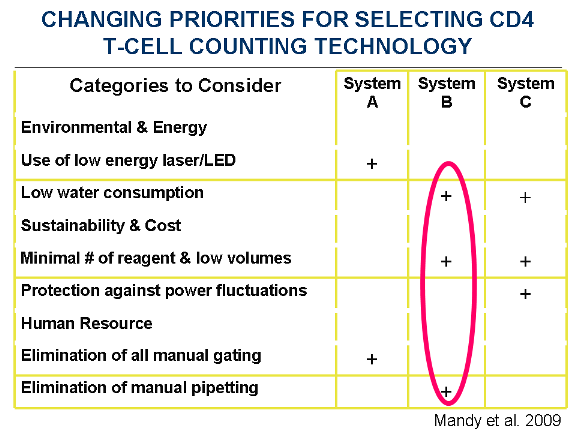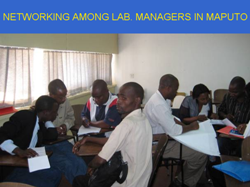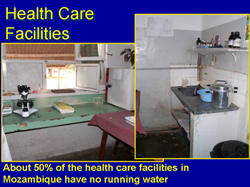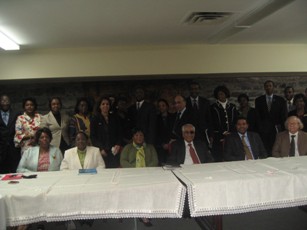Cytometry's Role in the Fight Against AIDS
Innovative Diagnostics & Quality Management
By Francis Mandy
Francis Mandy spent 35 years with the Canadian Public Health Agency. There he spent 20 years at the National Laboratory for HIV Immunology, Bureau of HIV/AIDS, STD, and TB working on domestic, US, and global fight against HIV disease. He left in 2007 to focus on developing strategies, selecting appropriate technologies, and promoting and developing innovative products that can make a difference in managing quality diagnostic facilities that are sustainable in rural regions of resource-poor countries.
In 2008 a special issue was published in the journal Cytometry Part B: Clinical Cytometry, by an editing team with George Janossy’s legendary tenacity, Mo O’Gorman wielding his judicious Occam’s razor, my meagerl input, and Chuck Goolsby at the helm with his inexhaustible patience. It covered the contemporary HIV story and the impact of flow cytometry is having throughout the Southern Hemisphere with the infectious disease burden. The issue was supported by many generous quality contributions. Some unconventional but practical strategies have evolved from that issue to help with the selection of CD4 T-cell counting. An abbreviated version of such Table is presented here:

The three critical criteria that a program manager must study when considering setting up a CD4 counting facility: (1) environmental and energy situation; if there is no electricity, a battery powered instrument system is required, (2) sustainability and general cost; a free instrument system that requires expensive reagents is not sustainable, (3)availability of skilled labor; one must select an instrument system that is simple to operate regardless of cost. The degree of flexibility within the 3 variables will determine the instrument system selection.
The pragmatic 21st century approach rejects the traditional post-colonialist dogma where one usually worked around a donated instrument to attempt to build a regional clinic for a selected lucky village. In the past, such approaches ignored the political, social, economic, and environmental vulnerabilities which inflict public health care facilities in rural resource-limited locations in most countries.
In the last few years, three remarkably refreshing sets of insights came along from three well-known icons of the cytometry community. With their inspiration we are now in a position to redefine the provision of essential laboratory services when facing extreme poverty. It is a significant digression from the economic and social order prophecies of notables such as Jeffrey Sachs and Jared Diamond. The first of our mavericks in this trilogy is Howard Shapiro with his classic Galilean concept of optics for astronomy forged with the sophistication of Len Herzenberg’s immunophenotyping and colored by the elegant celestial spectral studies reported by G. Herzberg. Howard outlined how to reduce the T-cell subset assay to a manageable challenge with available and affordable gadgetry. The second is Paul Robinson’s scholarly drive to an astonishingly minimalist flow cytometer for CD4 T-cell enumeration. His gravity-defiant personal achievements must have reminded him to harness Newton’s laws to keep essential cytometry flowing. Finally, Bala Manian decided it is high time to teach his version of elementary entrepreneurial health economics focused on how to fish in the sea of a diagnostically deprived rural giant, his native India.
With such innovative and eclectic contributors, the foundations are all in place to start reducing disparities to health care around the world. In 2009 there will be three new CD4 T cell-counting instruments released that are all truly portable small devices, and all embracing the concept of cellular astronomy without any manual gating. In recent years instrument diversity became nothing short of astonishing. There are now cytometers with only an LED as the light source (PointCare Now), there is an instrument that does not require a test tube or a pipette, as the capillary cassette that wicks the blood from the finger-tip also serves as the instrument sample delivery device (PIMA). There is one flow system that works without hydrodynamic focusing (Guava). Bala Manian is developing a new diagnostic platform that integrates the use of slow-dried reagents. It is based on an economically bullet-proof strategy that eliminates expensive cold-chain transport, local refrigerated storage, and other cost associated with management of reagent stocks having limited shelf life. Decentralized clinics with 50 mile-radius penetration should reach populations from several villages, thus reducing patient travel time. The local clinic’s volume will generate additional employment opportunities for the region. The assumption is that in the near future, entrepreneurs will need wellness reports to negotiate a line of credit. Their good health will serve as the only collateral they have and need. This is the ultimate reality-based credit system for the working poor throughout Asia and perhaps in Africa. Such a proposed wellness validation system will survive only if it is economically sustainable by the very community it serves. Progress is unstoppable; perhaps as many as five different vendors will be offering dried reagents for CD4 counting by the end of 2009.


Such concepts are not easy to bring to high priority at the national level in countries such as Mozambique where 50% of public health laboratories have no running water.

In December, 2008, the 15th ICASA, the African International AIDS Congress in Dakar, Senegal, took place. With financial assistance from the US government, Francis Mandy organized a Satellite Symposium at this Congress with the title: “Eliminate Economic Disparities in Rural Africa: Quality Managed Infectious Disease Monitoring & Diagnostics without Compromise.” The intention was to attract national program managers who agree that the time is now to implement such ambitious programs in rural Africa. It is telling that attendance was poor, because most program managers do not consider investment in quality management a high priority.

Manian in Ottawa
To continue with the Manian saga, ReaMetrix, a young Indian company, is introducing products that support Bala’s innovative paradigm. The new movement has inspired some local involvement with the African diplomatic community in Ottawa, Canada. With the steadfast organizational skills of an Ottawa scientist, Habiba Chakir, and the dedication of his Excellency, the Dean of African Ambassadors, the Ambassador from Togo had 30 African Embassy represented this February at a presentation made by Bala Manian and Francis Mandy to discuss some of the new affordable instrumentation and to see how sustainable health-diagnostics activities with entrepreneurial principles can be implemented in African countries to fight infectious diseases.

- Francis Mandy
- International Centre for Infectious Diseases
- 403-445 Ellice Ave.
- Winnipeg , Manitoba , R3B 3P5
- Email: fmandy@rogers.com
- www.leukometrics.com